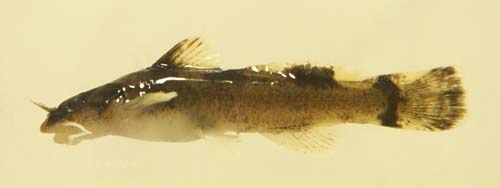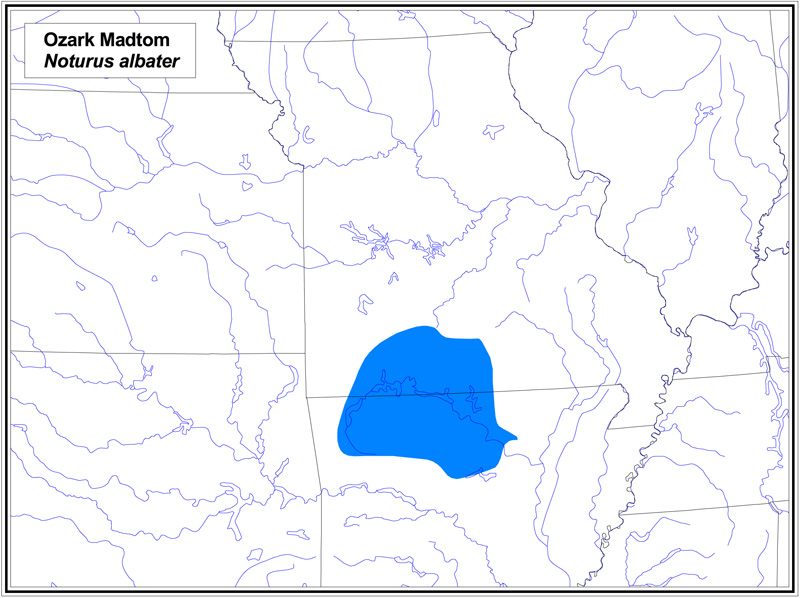
Adult from Benuetts R., Fulton Co., AR
52 mm SL, Collected 30-March 1980, INHS 86815
OZARK MADTOM
Noturus albater Taylor 1969
Identification: The Ozark Madtom has a stout body and a relatively short head. A large dark blotch beneath adipose fin usually extends into the lower half of the fin, rarely to the edge. A dark bar (sometimes diffuse) is on the base of the caudal fin. The caudal fin has a straight or slightly rounded edge and a creamy white area on the upper margin of the fin. The high adipose fin has a rounded edge and is followed by a notch between it and the caudal fin. The pectoral spine has 6-10 large teeth on the rear edge and small teeth on the front edge. The body is yellow-brown to light brown above and pale yellow to cream-white below. There is dark mottling or blotching and 4 dusky saddles. The fins are yellow or white with indistinct blotches. The caudal fin often has irregular dark bands. The pectoral fin has 9 rays, and the anal fin has 13-16 rays. To 4 � in. (12 cm) total length.
Range: The Ozark Madtom is found in the uplands of Missouri and Arkansas in the upper White and St. Francis River drainages. Ozark Madtoms in the St. Francis River are more mottled and stout-bodied than those in the White River, which tend to be more slender and boldly patterned. The species is locally common.
Habitat: The Ozark Madtom inhabits fast clear rocky riffles and flowing pools of creeks and small to medium rivers.
Similar species: The Least Madtom, Noturus hildebrandi, is more slender and lacks a white area on the upper caudal fin margin. It also has a white lower side without dark pigment (N. h. lautus) or is prominently blotched above and on the side (N. h. hildebrandi). The Checkered Madtom, N. flavater, also occurs in the White River drainage but has 4 bold black saddles with the saddle under the adipose fin extending to the edge of the fin, a bold black bar on the base of the caudal fin, and a black blotch on the outer 1/3 of the dorsal fin. The Black River Madtom, N. maydeni, is morphologically indistinguishable from the Ozark Madtom.
